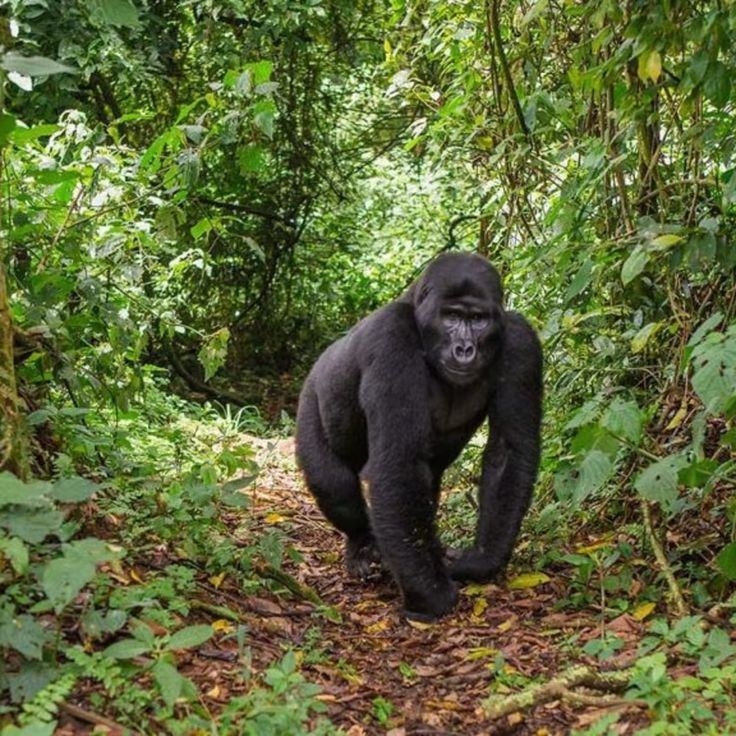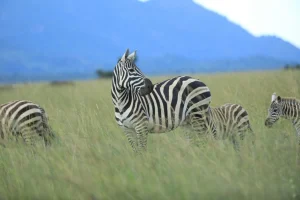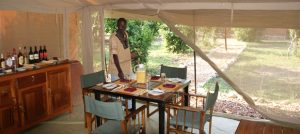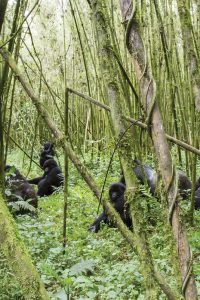Daily Availability of Gorilla Permits in Uganda
1. Permit Availability Breakdown
-
Bwindi Impenetrable National Park:
- Approximately 96 permits available daily, spread across various sectors:
- Buhoma Sector: 4 habituated families (Mubare, Rushegura, etc.)
- Nkuringo Sector: 2 habituated families (Nkuringo, Bushaho).
- Rushaga Sector: 4 habituated families (Nshongi, Oruzogo, etc.)
- Ruhija Sector: 4 habituated families (Bitukura, Kyagurilo, etc.)
- Approximately 96 permits available daily, spread across various sectors:
- Mgahinga Gorilla National Park:
- 12 permits available daily for the Nyakagezi Gorilla Group.
Total Daily Availability
- Total: About 108 gorilla permits available daily across both parks.
2. Booking Gorilla Permits
- How to Book:
- Directly through the Uganda Wildlife Authority (UWA): You can book your permits via their official website or contact them through email.
- Through Tour Operators: Many visitors prefer booking through reputable tour operators who can handle arrangements for permits, accommodation, and guided tours.
- Booking Timeline:
- It’s advisable to book your permits 6 to 12 months in advance, especially during peak seasons (June to September and December to February) when demand is high.
- Permit Cost:
- As of now, the cost for a gorilla trekking permit in Uganda is $800 per person.
3. What to Expect During Your Trek
- Duration and Difficulty:
- Trekking Duration: Depending on the location of the gorilla family, treks can last from 2 to 8 hours.
- Physical Challenge: The trek can be physically demanding, often involving steep and muddy terrain, so a moderate level of fitness is required.
- Group Size:
- Each trekking group is limited to 8 visitors to minimize disturbance to the gorillas and ensure a more intimate experience.
- Guidelines:
- Park rangers provide a briefing before the trek, outlining rules such as maintaining a distance of at least 7 meters (23 feet) from the gorillas, not feeding them, and minimizing noise levels.
4. Conservation Efforts
- Importance of Permits: The revenue generated from gorilla permits goes directly towards conservation efforts, local community development, and the protection of mountain gorillas and their habitats.
- Community Involvement: Local communities benefit from eco-tourism initiatives, promoting sustainable practices and reducing human-wildlife conflict.
5. Enhancing Your Gorilla Safari Experience
- Preparation:
- Physical Fitness: Engage in cardio and strength training before your trip to prepare for the trek.
- Packing Essentials:
- Sturdy Hiking Boots: Essential for navigating rugged terrain.
- Comfortable Clothing: Dress in layers; lightweight, moisture-wicking materials are recommended.
- Rain Gear: A waterproof jacket is crucial, as rain can be unpredictable.
- Insect Repellent: Protect yourself from mosquitoes and other insects.
- Water and Snacks: Stay hydrated and energized during the trek.
- Cultural Experiences: Consider including community visits or cultural experiences in your itinerary to enrich your understanding of the local culture and conservation efforts.
- Photography: Bring a camera with a zoom lens for capturing the magnificent gorillas and the stunning landscapes. Ensure your camera is easily accessible during the trek.
6. Health and Safety Precautions
- Vaccinations: Ensure that you are up to date on necessary vaccinations, including Yellow Fever, and consult with your healthcare provider for any additional recommendations.
- Travel Insurance: Obtain travel insurance that covers trekking activities and emergency medical evacuation.
- COVID-19 Precautions: Stay informed about any health advisories or entry requirements related to COVID-19.
7. Sample Itinerary for a Gorilla Trekking Safari
Here’s a suggested 4-day itinerary that incorporates gorilla trekking:
Day 1: Arrival in Entebbe
- Arrive at Entebbe International Airport.
- Transfer to a hotel for overnight stay.
- Explore local markets or the Entebbe Botanical Gardens, if time permits.
Day 2: Transfer to Bwindi Impenetrable National Park
- Depart early for Bwindi (approximately 8-10 hours by road).
- Enjoy scenic stops along the way.
- Check into accommodation near the park.
Day 3: Gorilla Trekking in Bwindi
- Early morning briefing at the park headquarters.
- Trek to find the gorillas (2-8 hours depending on the group’s location).
- Spend one hour with the gorillas once located.
- Return to your lodge to relax and reflect on the experience.
Day 4: Departure
- Depending on your schedule, consider a morning activity (e.g., nature walk or community visit).
- Return to Entebbe for your departure flight.
Conclusion
Gorilla trekking in Uganda is a life-changing experience that allows you to connect with one of the world’s most endangered species in their natural habitat. With only about 108 permits available daily, it’s essential to plan ahead and secure your permits early. By understanding the logistics, preparation, and cultural context, you can make the most of your iconic primate safari holiday in Uganda. Enjoy the adventure, the breathtaking scenery, and the unforgettable moments with these magnificent creatures! Daily Availability of Gorilla Permits in Uganda.




